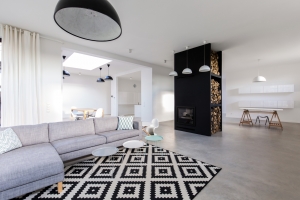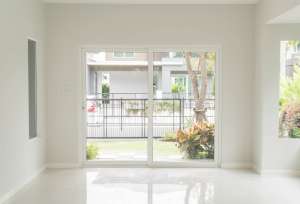Why go to a fancy studio when you can do it all from your bedroom?
Sounds exciting, right?
It's now easier than ever to make professional-level beats without leaving home. In the past few years, there has been a revolution in the music production industry. Many budding musicians and even professionals now prioritize making beats from their home studios. And why not, when technology has advanced so much?
Now, everyone can create premium beats. All you need is a basic set of music equipment, like a computer, a DAW, a MIDI controller, and some music resources. Unison Audio is a well-known brand that sells all kinds of music-related stuff such as sample packs, MIDI packs, music plugins, and preset banks. What's best? You can buy these resources online from Unison Audio from the convenience of your home. You can also get access to their free sample packs by visiting their website.
Keep reading to learn how you can make premium beats from your bedroom studio:
What equipment do you need to produce top-quality beats in a home studio?

Here are a few must-have equipment to create music from your home:
-
Computer
The most important part of your studio setup is your computer. The key component to consider is RAM, as most DAWs require at least 8 gigabytes. Your computer's capabilities also depend on the number of audio tracks you want to work with and the types of instruments you'll connect. If you plan to use several virtual instruments and onboard processing, you'll need a powerful computer that can manage all these tasks.
-
DAW
Digital Audio Workstation is the main software you'll use on your computer. There are many DAWs available, with varying price ranges. You should choose a DAW that fits your workflow and music style. It's important to research, as this software will be crucial to your production setup. Popular options include Ableton Live, FL Studio, Studio One, Logic Pro, Reaper, and Cubase.
-
Audio Interface
An audio interface is a device that connects to your computer's USB port. It converts analog sounds into digital signals. Audio interfaces allow you to connect instruments and microphones to your computer for high-quality audio recording and playback.
These devices come in different input and output configurations.
-
MIDI Controller
A MIDI keyboard helps you play and program virtual instruments and drum sounds. Their sizes differ based on the number of keys, such as 24, 48, 64, and 88 keys. You should select the right-sized MIDI keyboard based on your programming needs and the space in your studio where you will place it.
-
Microphone and Headphones
If your room has poor acoustics and you can't improve the space, good headphones are a key requirement. Moreover, you must also have a microphone to connect to your audio interface for recording. A studio-quality microphone is important if you want to record vocals or acoustic instruments.
-
Sound Library
A complete sound library with sample packs and essential virtual instruments is a primary requirement for a home studio. You can buy individual items or a complete package that includes free sample packs. Brands like Unison Audio, Splice, and Loopmasters offer great sound libraries to help you get started.
How can you set up a productive workspace in your bedroom studio?
Your studio can be any small, dedicated space in your home. The size doesn't matter, but it should resemble a professional studio. Here are some important points to keep in mind:
- Choose a quiet area in your home where you can concentrate on making beats without distractions.
- Focus on the acoustic qualities of your space and minimize sound reflections by adding bass traps, diffusers, and absorbers.
- Create a welcoming workspace by adding a combination of natural and artificial lighting.
- Make your studio creative by including decorative items such as artwork, posters, or plants.
- Get a comfortable chair with back support so you don't get tired while experimenting with beats.
- Make sure your studio has fast, reliable internet for strong connectivity.
6 Proven Steps to Make Professional-Quality Beats in the Comfort of Your Home

Making professional-quality beats at home is not difficult. There's no set order—you can start whenever inspiration hits. Here are six tried-and-true steps that can simplify your beat-making process.
-
Set Your Tempo
First of all, you will have to choose the BPM (Beats Per Minute) to set the tempo for your beat. For that, consider the vibe and emotion you want to convey. It can be sad or happy, energetic or low-key, and in a major or minor key. After that, select your instruments based on the vibe.
-
Create Your Drum Pattern
If you have a drum sequencer, you can pick a drum sound and arrange it in the pattern you want. However, if you don't want to create your own drum beat, you can use a pre-made drum loop instead.
-
Develop Chord Progressions
After making your drum patterns, create simple chords to support your beat. You can use any instrument for your chord progressions. Keep your initial chords basic, as they will help shape your melody and bass line later.
-
Add a Catchy Melody
It is an important step in the beat-making process because the melody brings your beat to life. So, use your basic chord progression as a foundation and create a melody that takes your beat to new heights.
-
Incorporate Bass and Sound Effects
A beat without strong bass and interesting sound effects feels lifeless. You must add suitable bass notes and sound effects to keep listeners engaged. Use your creativity to craft unique sounds and create standout beats.
-
Structure Your Beats
The final step is arranging your beat. You should organize it into different sections, such as the intro, verse, hook, and outro. This will help your beat change throughout the song and grab the attention of listeners.
Final thoughts
You can easily create your favorite beats or songs right in your bedroom studio. No need for a lavish commercial setup; your room can be your perfect music space. Just arrange the necessary equipment, set up a productive workspace, and follow the key steps we've discussed. You can use these tools and techniques to produce great beats in no time.






